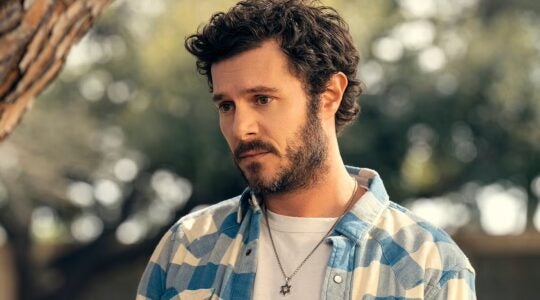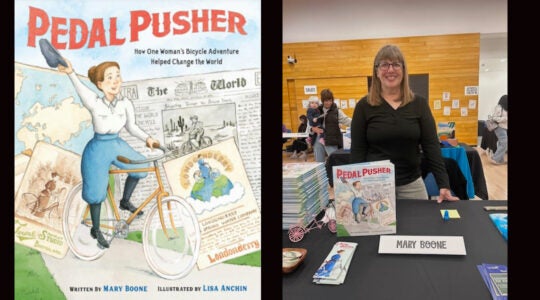Maurice Gotlieb saw his building’s concierge betray his dad to the Nazis, which must have left an impression.
As one of the seminal French cartoonists — using only "Gotlib" — he has infused that nation’s enthusiasm for the sarcastic double take with Jewish rage and whimsy, informed strongly by the rhythms and syncopation Harvey Kurtzman brought to the original Mad Magazine.
I learned French as a lonely (okay, pathetic) 12 year old, armed with my mother’s gift of a pocket French-English dictionary, haunting my school library and when it closed, the public library around the corner from my house, working first through the entire Tintin collection, then Asterix, and finally Asterix’s home, Pilote weekly — which also hosted Gotlib.
One Pilote annual hangs, pages askew, off a crowded shelf next to me. (Magazines like these are why my wife calls me a hoarder.) It dates from the early 1970s, which is when I used my paperboy earnings, bar mitzvah cash — I can’t recall, but in any case, money I could have spent better on baseball cards or model planes or somesuch — to pay for its exotic amusements.
Gotlib’s strip at the time was called La Rubrique-A-Brac (a pun translating — and this is an approximation — as Tchotchkesudaku. Okay, not an approximation, a crazed attempt at cultural transmogrification.)
One of the two-page strips still lingers (and I’m not alone — it still gets cited by commenters on French websites as a euphemism for Western exploitation of the Third World): It opens with the iconic image of a starving Biafran child, against a map of "Biafrogalistan North and South." Next panel, a newscaster, fashionably coiffed, continuing, "… where war still rages. Refugees flow. Each day, hundreds of children die of hunger." Third panel, in huge letters that the panel’s borders can’t contain: "EACH DAY, HUNDREDS OF CHILDREN DIE OF HUNGER."
That phrase reappears every three or four panels, shrinking each time, as does its significance in the public mind, as "La Drame Biafrogalistanais" is at first a cause, then an opportunity for artistic exploitation, then a punchline in an untranslatable joke ("smashing the pavement" is a French euphemism for starving, and never mind, I said it was untranslatable.)
Gotlib does not spare himself, depicting in the final line of panels two schoolkids cracking up at the very strip he is drawing. The final two panels: The phrase, "Each day, hundreds of children die of hunger," now virtually invisible, and then the child, again, alongside Gotlib’s tiny alterego, obliviously reading the newspaper.
This is what we do to words that matter — we make them mean everything, and then nothing. Nine years ago, freshly arrived at AP’s DC bureau, I noticed that Republicans in the nascent Bush administration were using to death "the politics of personal destruction," a phrase that had been coined by Bill Clinton. I thought that was pretty funny, so I wrote what I thought was a cute take on it.
In the course of my interviews, Mary Matalin — among the Bushies who had embraced the phrase — also tossed out a "Can’t we all just get along?"
That actually shocked me — I had, mostly, lived abroad since 1978, and for me, having followed the 1991 Los Angeles riots from Jerusalem, the phrase still had the meaning imbued in it by Rodney King’s impassioned plea.
I don’t think Matalin was meanspirited — I subsequently came to understand that, stateside, the phrase had, indeed, been overused to the extent of becoming a punchline.
There are times, though, when phrases, like deactivated superheroes brought back for another run, regain their powers.
So this is my longwinded way of saying you must, must, must read Ethan Bronner’s heartbreaker tonight about Marya, a Gazan girl paralyzed in an Israel missile attack, and Orel, an Israeli boy who lost half his brain in a Hamas rocket attack.
They’re best buddies at Alyn Hospital in Jerusalem. They’re 8. And they get along.
And Bronner all but wonders why we — the collective "we” — can’t emulate them:
In a way, a friendship between two wounded children from opposing backgrounds is not that surprising. Neither understands the prolonged fight over land and identity that so divides people here. They are kids. They play.
But for those who have spent time in their presence at Alyn Hospital in Jerusalem, it is almost more powerful to observe their parents, who do understand. They have developed a kinship that defies national struggle.
JTA has documented Jewish history in real-time for over a century. Keep our journalism strong by joining us in supporting independent, award-winning reporting.





